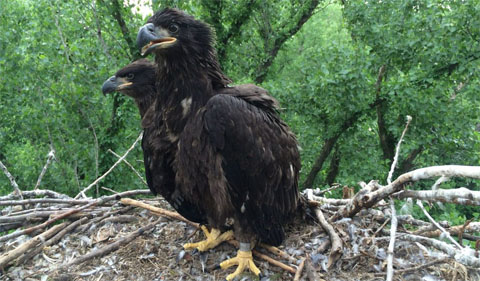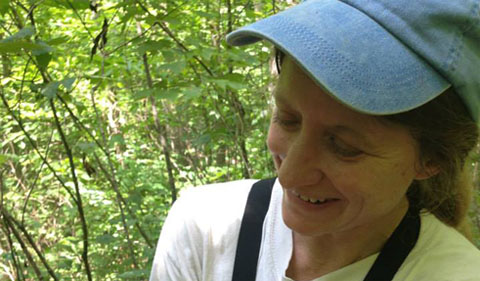Ohio University biologist Dr. Kelly Williams teamed up with scientists from Raptor Environmental, the U.S. National Park Service Great Lakes Inventory and Monitoring Network, and the Wisconsin Department of Natural Resources to analyze trends in chemical contamination in bald eagle nestlings at six study areas in the upper Midwest from 2006 to 2015 and two Lake Superior sites from 1989 to 2015.
Since bald eagles are a top predator of aquatic systems, they bioaccumalate environmental contaminants—including PCB, DDE and mercury—and serve as biosentinels for chemical contamination.
Her co-authors were Cherly Dykstra of Raptor Environmental, William Dykstra and Rebecca Key of the U.S. National Park Service, and Michael Meyer of Wisconsin DNR.
Their paper, Trends and patterns of PCB, DDE, and mercury contamination in bald eagle nestlings in the upper Midwest, was published in the Journal of Great Lakes Research.
Their results: Contaminants are still detected in eaglet (eagle nestling) plasma with the highest concentrations of DDE in eaglets from the Apostle Islands in Lake Superior. DDE concentrations did decrease region wide from 2006–2015. PCBs detected in eaglet plasma did not decline region wide. Eagle nestling breast feathers were used to determine mercury concentration and nestlings in the upper St. Croix River had highest mercury concentrations. Mercury concentrations declined at Lake Superior sites between 1991-2015 but there was no significant decline among all study areas between 2006–2015 and data suggest an increase in mercury at two study areas during these years. Contaminant concentrations were below levels associated with significant impairment of reproduction; however, increasing concentration of mercury in some areas combined with relatively high concentrations at some nests suggest continued monitoring should be a management priority.





















Comments